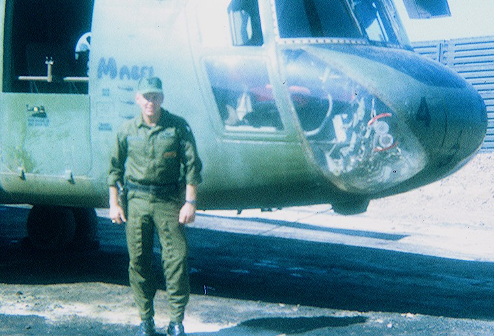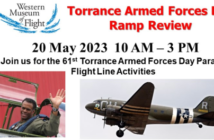In Late May 1969, the 101st Airborne had sent an infantry brigade down from Camp Eagle (Hue – Phu Bia, I Corps) to Chu Lai, to assist the Americal Division. The 101st sent their own aircraft, primarily Hueys, some Cobras and four Chinooks to support the brigade. I was a “peter pilot”, quite new “in country”. As the only “Commissioned Officer” (1LT), I was the assigned “Section Leader” for the flight of our four CH-47 Chinooks along with 7 WOs. Our flight included three crew per aircraft from B/159th Aviation Battalion (Assault Support) – Call Sign: Varsity.
The four aircraft and crew were “hosted” by the same (Chinook) company that supported the Americal Division. Our aircraft were maintained and kept on the tarmac at the Chu Lai airbase while the crew members were “housed” at the 178th ASH Co – the Boxcars, with quarters in the sand dunes overlooking the South China Sea. With a fleet of four aircraft, that meant that we needed to have one of them “down” every day, in order to perform routine maintenance. I provided the flight operations the tail numbers of the three we had available on a daily basis, and from that we received our missions for the day.
About a week after arriving at Chu Lai, I was the right seat pilot of A/C XXXX143, flying to a firebase (I believe was called Professional). When we, Varsity pilots, first flew into the base some miles West of Chu Lai during Area of Operations (AO) orientation flight we were with a Boxcar pilot. We noticed the outline of a burned Chinook near the landing pad. A Boxcar Chinook had been shot down there a couple of weeks before we arrived. I believe the entire crew had survived. This particular fire base was surrounded by higher terrain / elevation on all four sides. To avoid enemy anti-aircraft fire (primarily dual .51Cal’s), the preferred “lessons learned” technique, passed onto us by the Boxcars pilots, required steep spiral approaches and ascents.
We used the “spiral” pedal decent to get down, dropped off our load (internal, passengers and gear as I recall) and performed an almost vertical climb out uneventfully. We proceeded to head on a more northerly route which kept us parallel to and further from Chu Lai. At an altitude of about 3,000 AGL our newer and stronger right engine began losing power. We “beeped up” the left “good” engine as far as we could without going over red line; yet we were descending at about 100’ per minute. As post analysis of the engine would reveal, we had taken a single round (AK-47?) in the bleed band of that right engine, causing it to lose power (compression). Believing we could not make it all the way back to Chu Lai and that it was “Indian territory”, thus a bad place to set down, we began looking for alternatives. Continuing more northerly, I found the nearest “friendly” location on our map: a Special Forces “A” compound, located right on a river bank (Tra Bong River?). That is where we headed.
A Special Forces Captain, quite surprised and excited about our unannounced visit, strongly insisted that we get the hell out of his compound. After explaining our situation, he was somewhat sympathetic but we had to be out before dark or he’d “blow us up in place”! He felt a Chinook would be a very attractive target come sun down and he didn’t want to be subjected to rocket (122MM) fire all night. Reluctantly, he had some of his soldiers set up a defensive perimeter outside of us / the Chinook and the compound. How’s that for luck?
Upon landing at the Special Forces compound we made contact with one of the other of our four Chinooks and told them of our predicament. It just so happened that this particular aircraft had a high frequency radio and antenna (operational) so they climbed to higher altitude, and made a call. They were able to reach another Varsity aircraft flying back in the 101st’s AO and that aircraft made a call back to our company maintenance. Monitoring our radios, we received a call back that a Chinook was on its way from Varsity Valley with a replacement engine for us. How’s that for luck?
Prior to departing from Varsity Valley, I had inventoried and signed for the gear onboard my aircraft as well as the other three Chinooks. I knew we happened to have all that extra “Billie” gear as originally supplied from the factory. It included the manual engine “hoist” on board A/C 143. The other three did not have any of that type of gear. How’s that for “luck”.
Paul Sparrell (Spec 5) who urged me to write and share this story was the flight engineer. Probably Ole Olson (Spec 4) was the crew chief on that flight, but we cannot remember for sure. Unfortunately we do not remember the door gunner, nor the CWO / AC (Aircraft Commander).
Sparrell, Olson, the door gunner and I had the engine completely disconnected and literally “dangling” on the hoist when the replacement engine arrived. The new engine was rolled off the back ramp of the maintenance Chinook. Our unit maintenance support lead, CPT Bob Ellis was one of the pilots of the maintenance flight. He helped us swap out the bad engine. The crew made good time in putting the replacement engine in and re-attaching all the hoses and controls.
Meanwhile, that Special Forces Captain had become more and more insistent that we get the hell out of his compound. He wanted to avoid incoming enemy fire. We did not need too much convincing as it were, so we by-passed a few “required” maintenance and pre-flight run up procedures, especially for a new engine. We cranked up the new engine as well as the other one. We lifted to a hover and didn’t see any leaks (significant ones at least). With all gauges “normal”, we flew back to Chu Lai and the Boxcars hanger. How’s that for luck?
Epilogue:
We were indeed “lucky” that day.
Unfortunately, a year later, and within weeks of my DEROS, Varsity lost two Chinooks and all ten crew members, while operating in Northern I Corps, close to the DMZ. I’ve often reflected back on us and them, these past 48 years.




